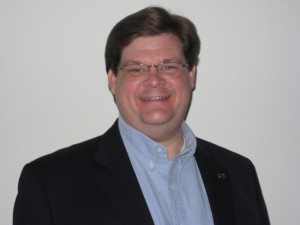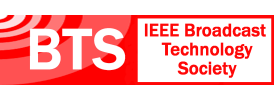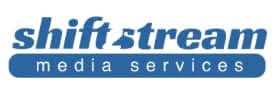- About
- Members
- Sponsors
- Subcommittees
- About Our Subcommittees
- Technology Group 3
- Implementation Team 1 – Advanced Emergency Information
- Implementation Team 2 – India
- Implementation Team 3 – ATSC 3.0 Conformance
- Implementation Team 4 – Brazil
- Implementation Team 5 – Tower Network
- Implementation Team 7 – Caribbean
- Implementation Team 8 – Automotive
- Planning Team 4 – Future Broadcast Ecosystem Technologies
- Planning Team 5 – Automotive Applications
- Planning Team 6 – Global Recognition of ATSC 3.0
- Planning Team 9 – Sustainability
- Technical Documents
- News
- Events
- Spotlight ATSC 3.0
- Contact Us
- Member Login
- Member Meetings
- Advanced Search
Search Site
Member Links
- About
- Members
- Sponsors
- Subcommittees
- About Our Subcommittees
- Technology Group 3
- Implementation Team 1 – Advanced Emergency Information
- Implementation Team 2 – India
- Implementation Team 3 – ATSC 3.0 Conformance
- Implementation Team 4 – Brazil
- Implementation Team 5 – Tower Network
- Implementation Team 7 – Caribbean
- Implementation Team 8 – Automotive
- Planning Team 4 – Future Broadcast Ecosystem Technologies
- Planning Team 5 – Automotive Applications
- Planning Team 6 – Global Recognition of ATSC 3.0
- Planning Team 9 – Sustainability
- Technical Documents
- News
- Events
- Spotlight ATSC 3.0
- Contact Us
- Member Login
- Member Meetings
- Advanced Search
Someone You Should Know
Posted on May 1, 2015 in ATSC News
Dennis Wallace, Meintel, Sgrignoli, & Wallace, LLC
Early Years in TV
Dennis Wallace is the Managing Partner of Meintel, Sgrignoli, & Wallace, LLC. a consulting firm serving the broadcast, consumer electronics and telecommunications industries. Wallace started his career in television in 1988 as a Chief Engineer, building a new UHF TV station in Indianapolis that today is the local Ion affiliate. Wallace previously worked in radio, starting at the tender age of 16. The Indianapolis UHF station was the very first installation of a common-amplification IOT (Klystrode) transmitter.
Wallace subsequently became involved in the Transmitter and Facilities business and worked for two transmitter manufacturers designing, building, and managing transmitter facilities for a variety of customers. In 1994, Wallace was hired as the RF Systems Engineer at the Advanced Television Test Center (ATTC) and was involved in testing of the Grand Alliance HDTV System, which became the foundation of the ATSC A/53 Digital TV Standard.
After his time at ATTC, Wallace started a consulting engineering practice providing consulting services to television stations, group broadcasters, trade associations, as well as consumer electronics companies. Wallace has two other partners in MSW, Bill Meintel (a former FCC Staffer) and Gary Sgrignoli (formerly with Zenith.) Each partner has a unique set of skills and knowledge to provide for various projects.
ATSC Participation
Wallace’s current role with ATSC is to represent the Pearl TV group in the various S32 (Physical Layer) activities and Ad Hoc Groups. His primary focus is all things related to the Physical Layer (RF) and working to ensure the most robust and flexible Physical Layer possible in ATSC 3.0. “Broadcasters want to achieve a universal service for a variety of devices and reception conditions. In order to achieve that goal we must ensure that the Physical Layer can deliver the signal even in the most challenging and hostile environments,” says Wallace.
Pearl TV also has additional representatives for other components of the system including long-time industry colleague Adam Goldberg (chairing a subcommittee on content protection) and former NAB engineering luminary Art Allison (who is working on system architecture and process issues.) The three work as a team to represent the Pearl TV member companies, and to ensure the development of the best system possible for ATSC 3.0.
Importance of ATSC Involvement
Asked about the importance of being involved with the ATSC, Wallace states: “It’s really important that broadcasters have the flexibility to change with the market as new services and/or devices are developed. So, working with ATSC we can ensure that we have the industry standards in place to enable those new services and devices as they are developed.”
Wallace believes that ATSC provides a critical function by providing not only the standard that both consumer electronics and broadcasting industries will operate under but more importantly the forum to discuss and resolve issues on the development of those new standards – a symbiotic relationship with both the CE and broadcast industries working together to achieve a system that works for both.
“I think the most surprising thing I’ve learned as an ATSC member is just how hard everyone is working to make ATSC 3.0 a reality,” says Wallace. “There are a huge number of man-hours spent each week on various meetings, activities, presentations, research, analysis and simulations. Exciting stuff.”
Racking Up the Frequent Flyer Miles
If he didn’t already travel enough during the week, Wallace often finds himself back at the airport as traveling and exploring new destinations is a frequent hobby. “I really have to find another source for those little bags of peanuts and pretzels,” he says. “I enjoy exploring new destinations and re-visiting old ones.”
Posted in ATSC News
News Categories
News Archives
Subscribe
Subscribe to The Standard, our monthly newsletter. Learn More
Join ATSC
ATSC is a membership organization with both voting and observer categories. Voting members include corporations, nonprofit organizations, and government entities, and they participate actively in the work of ATSC. Observers are individuals or entities not eligible to be a voting member.
Subscribe to our Newsletter
Subscribe to The Standard, our monthly newsletter, to stay up-to-date with ATSC news and events around the world.
Site Links
Contact Us
Advanced Television Systems Committee, Inc.
1300 I Street NW, Suite 400E
Washington, DC 20005
Do you have questions about ATSC?
About ATSC
The Advanced Television Systems Committee, Inc., is an international, non-profit organization developing voluntary standards and recommended practices for digital terrestrial broadcasting. ATSC member organizations represent the broadcast, broadcast equipment, motion picture, consumer electronics, computer, cable, satellite, and semiconductor industries. ATSC also develops digital terrestrial broadcasting implementation strategies and supports educational activities on ATSC standards.
© 2024 ATSC






































